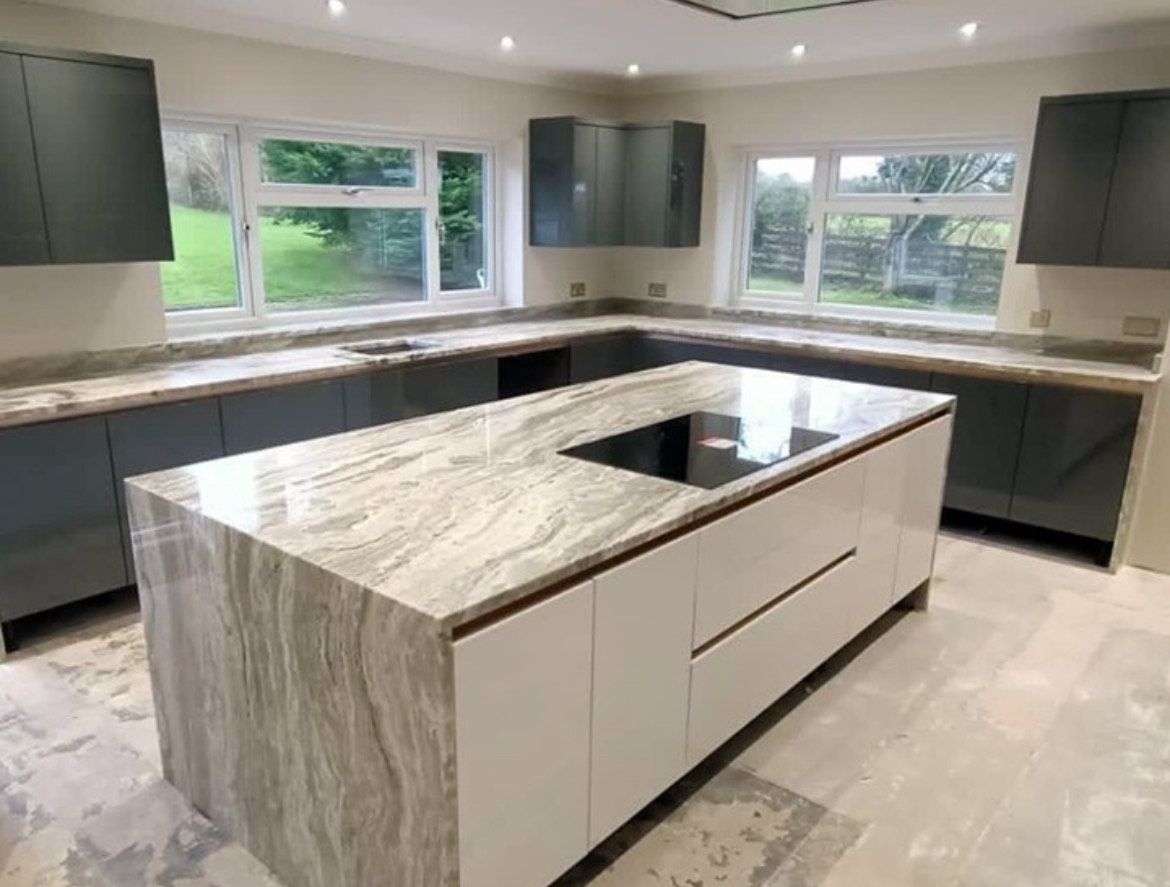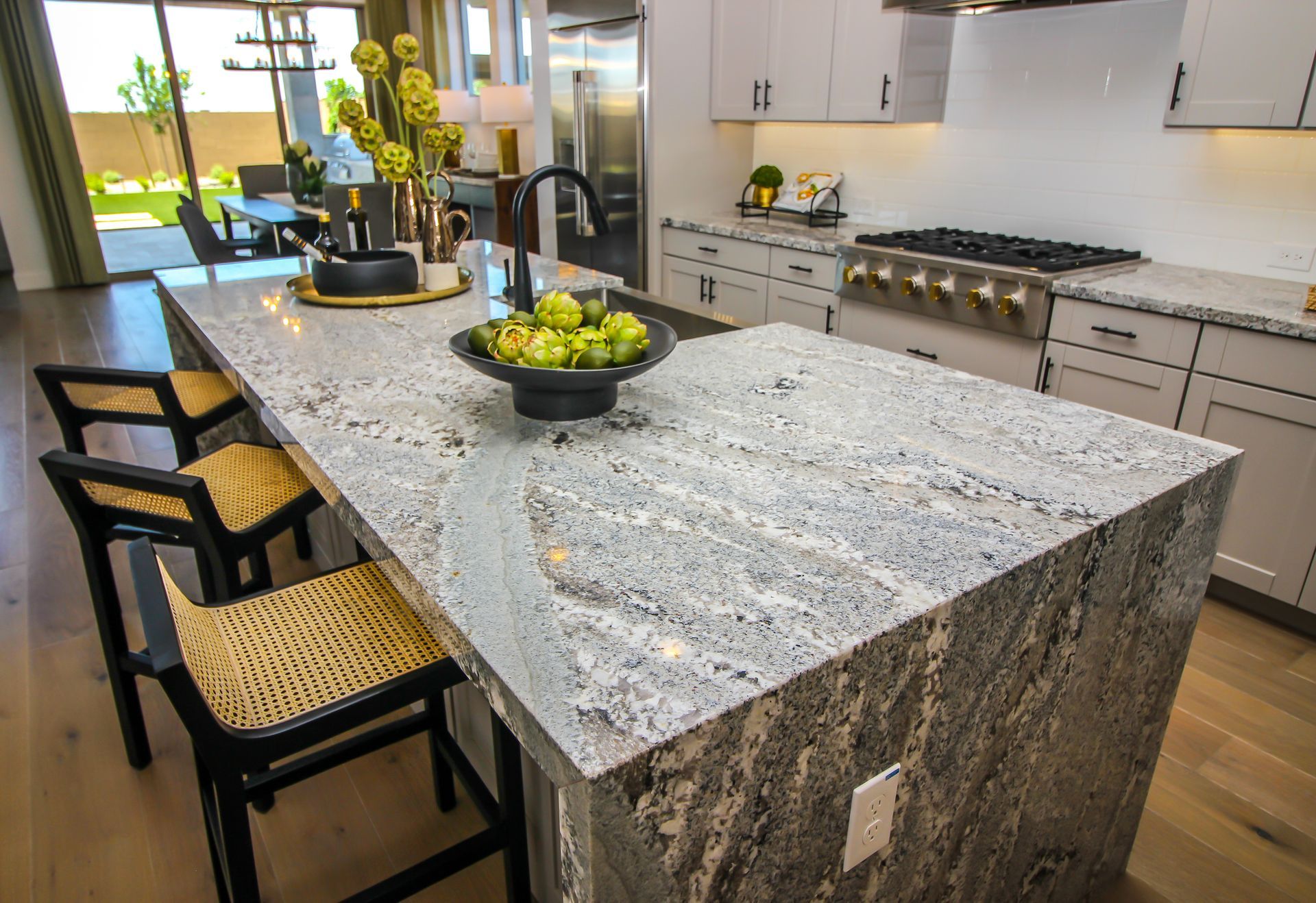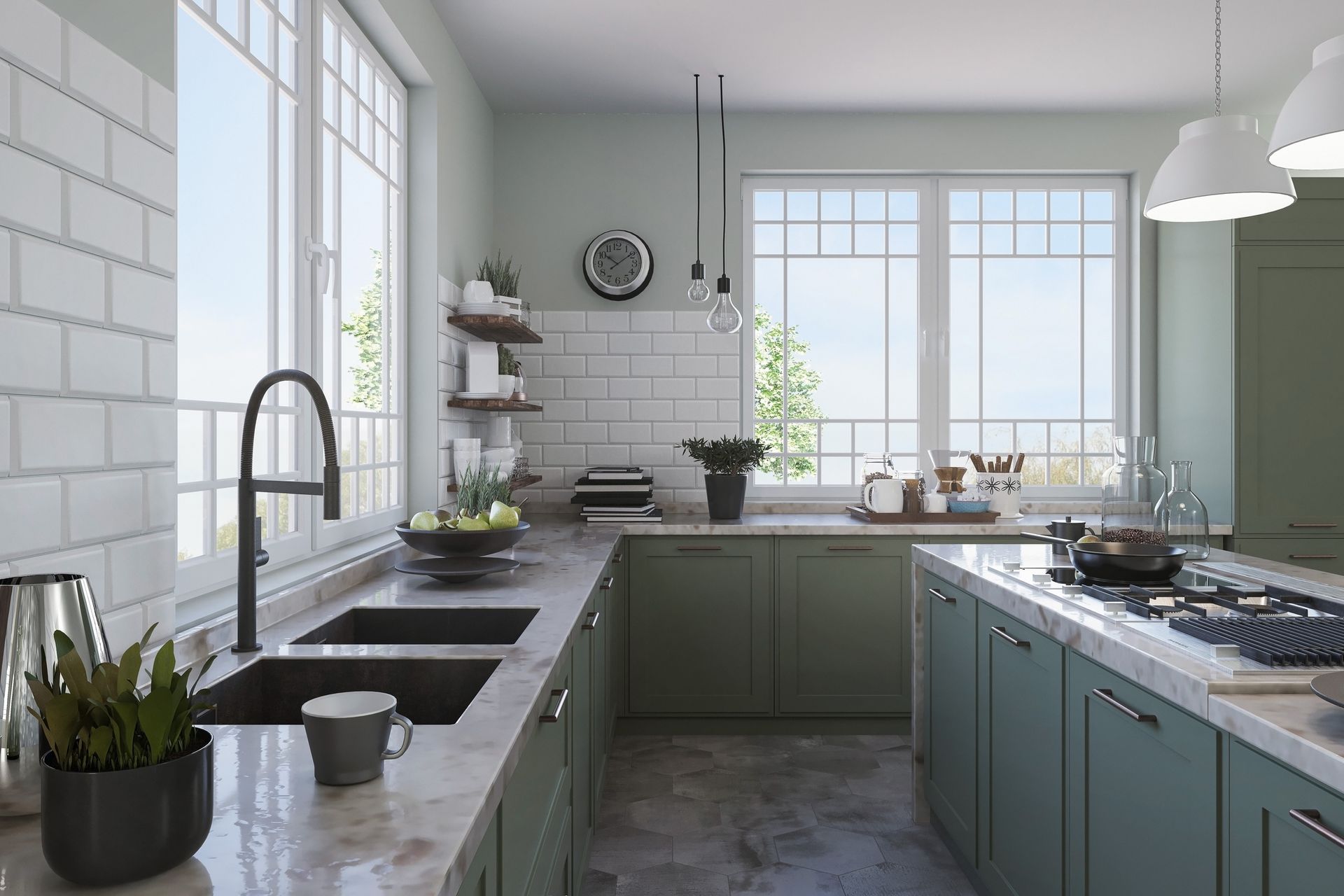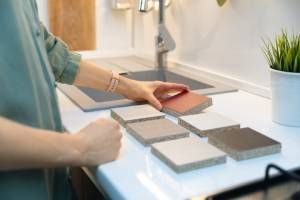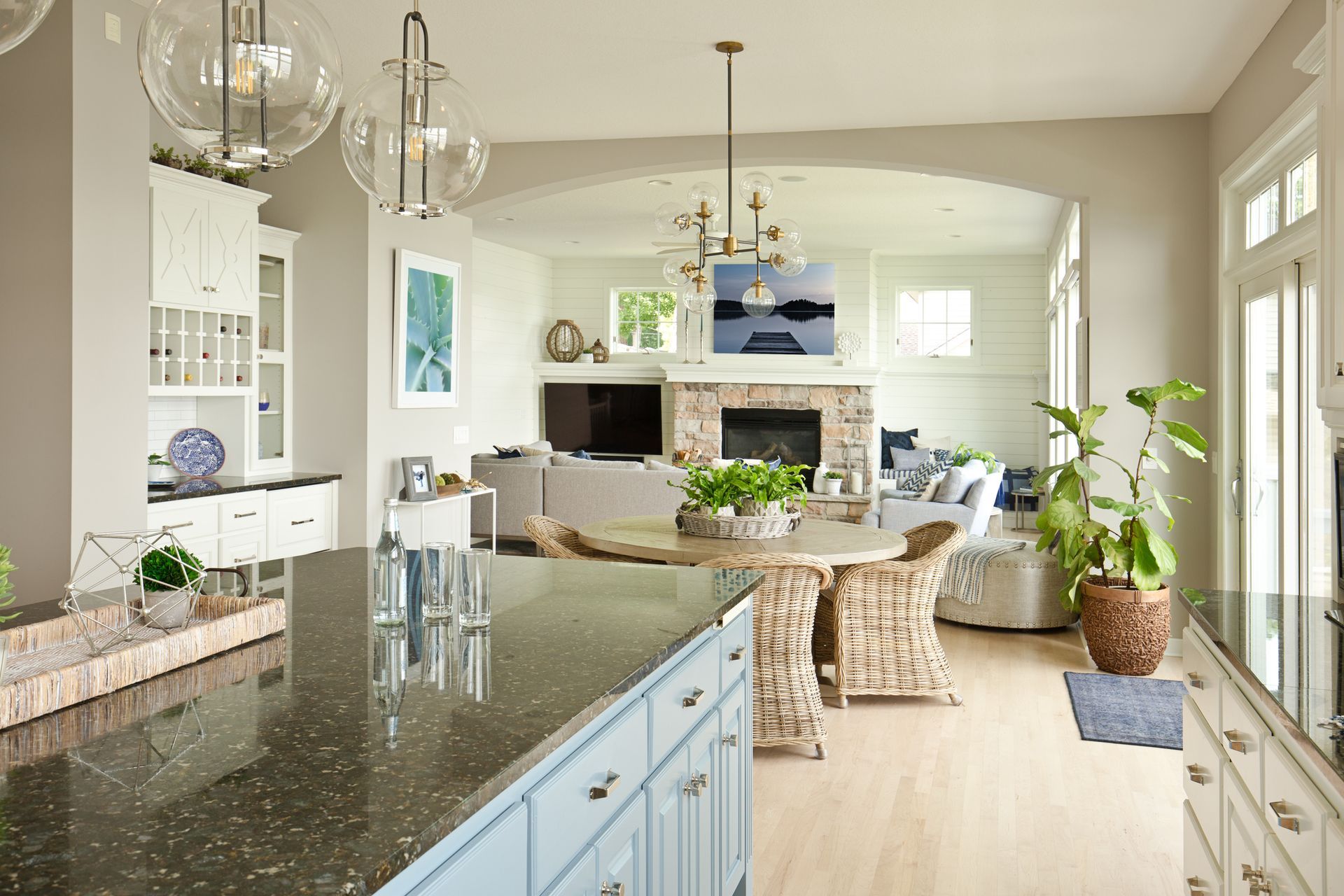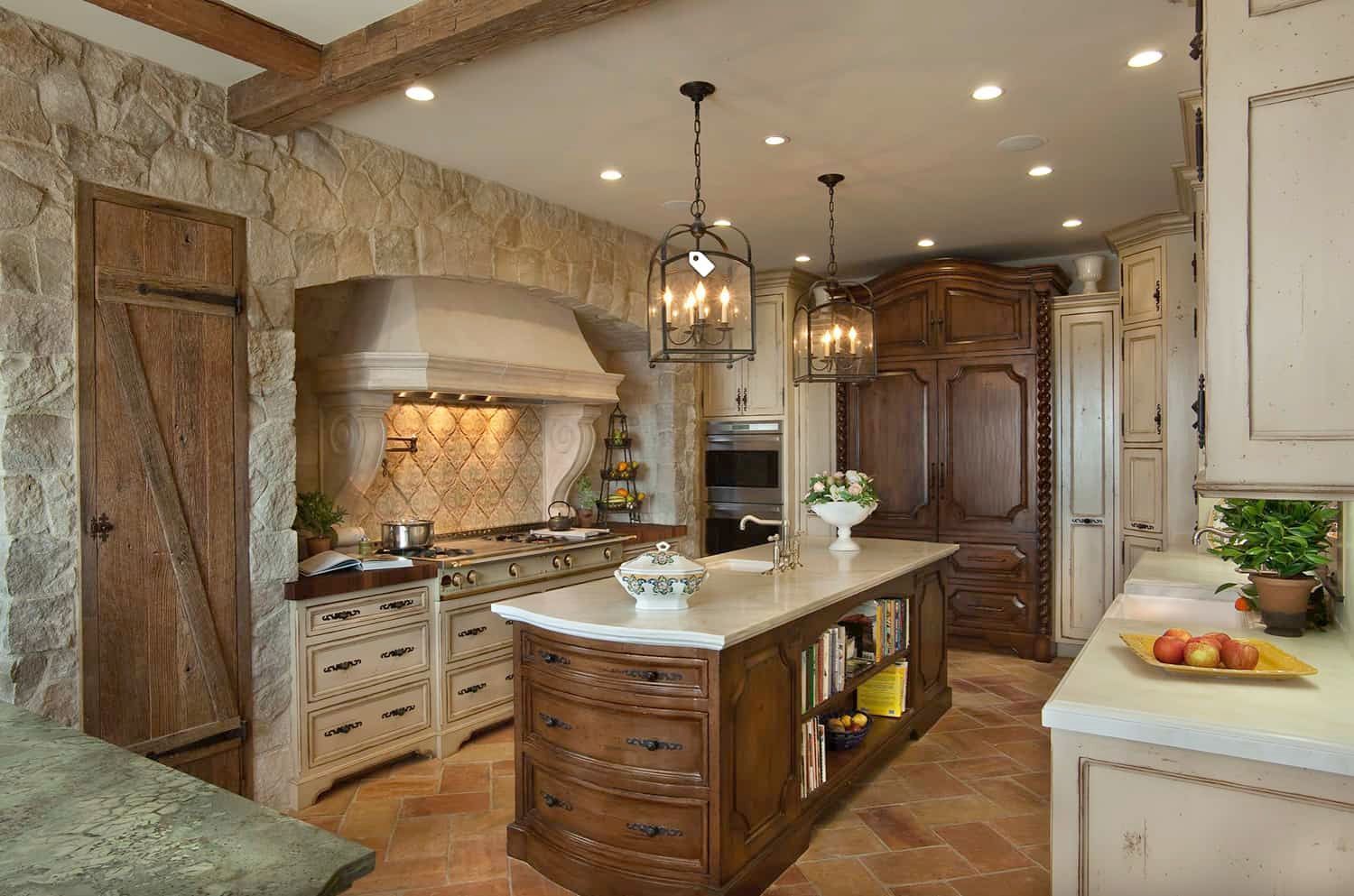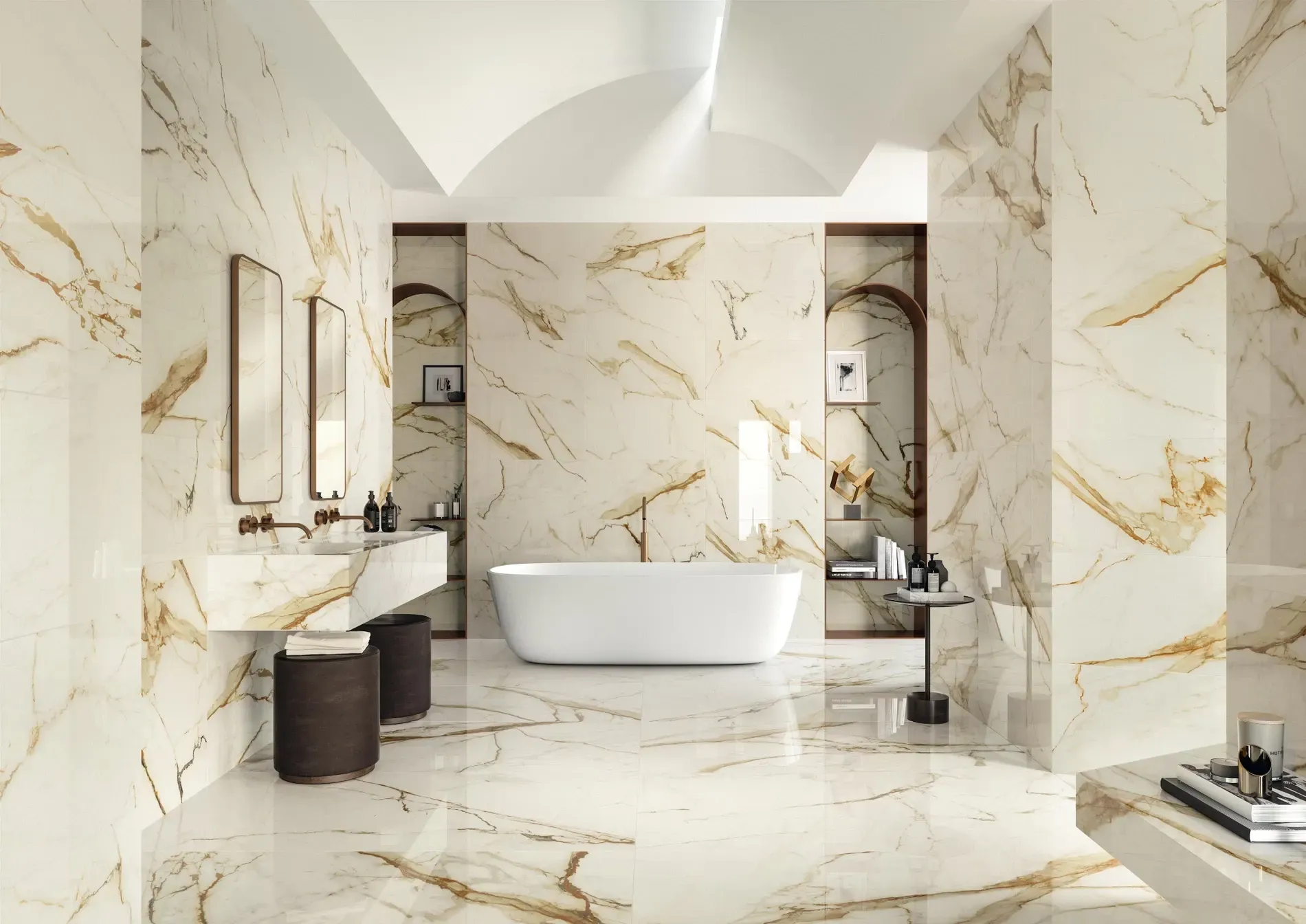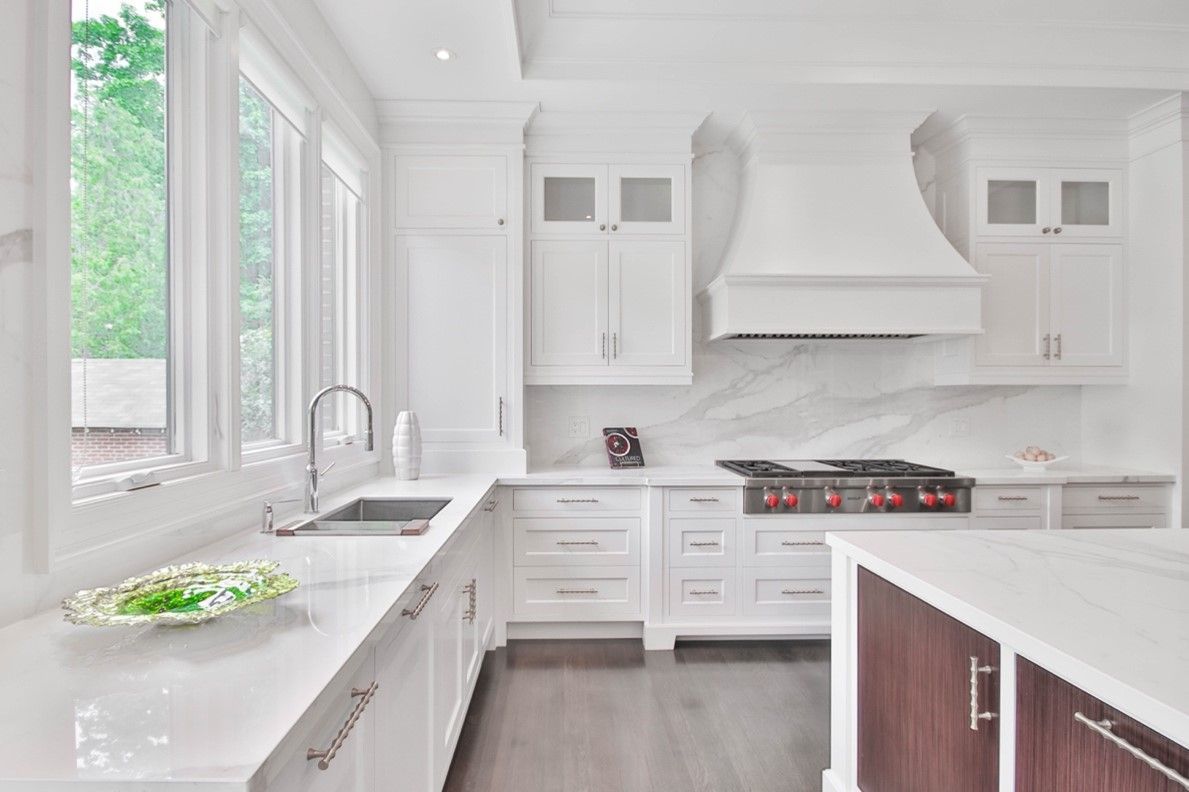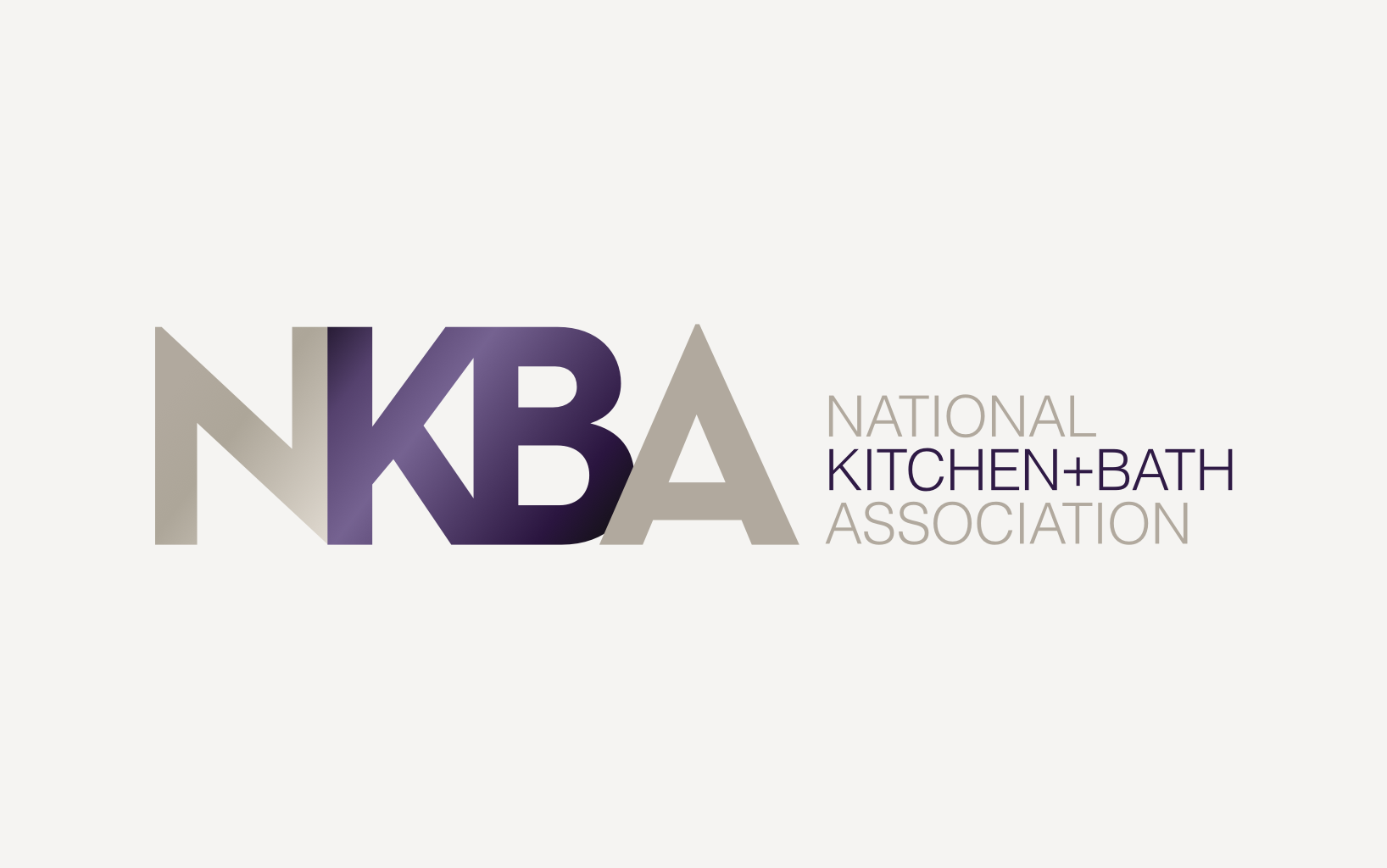A countertop must be able to withstand constant use while maintaining its good looks. A material that looks good but is difficult to maintain might not worth the investment.
When choosing your countertop material, consider the following:
- durability
- ease of cleaning
- heat resistance
- stain resistance
- scratch resistance
- visual appeal
- ease of repair
- cost
- value added & depreciation
Of course each countertop material has its pros and cons so it is important to know which features are important to you. Here are some of the advantages and disadvantages of both natural and engineered stone countertops including Granite, Marble and Quartz as well as some other popular choices such as Laminate and Wood.
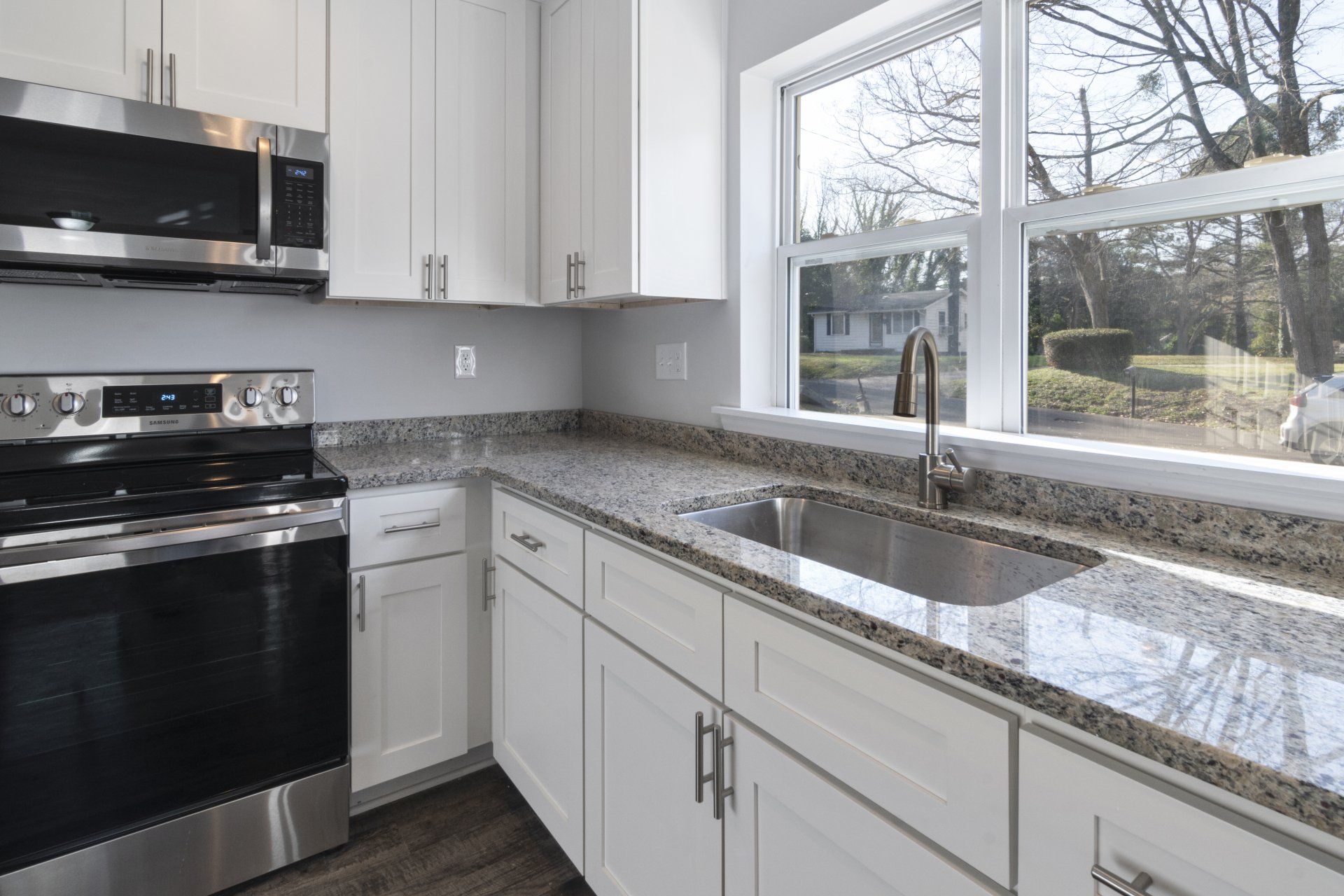
Marble
For a timelessly luxurious look in your home or office, Marble is a bright, durable stone choice that can last a lifetime with proper care. A white marble countertop has a unique charm Being a natural stone, marble offers a soft, silky and cool texture.
Available in a variety of colours and unique patterns.
Advantages
- Water and heat resistant
- Naturally beautiful and elegant
- Adds value to your home: A highly
- Unique patterns and colours: White, Black, Grey, Yellow and Pink tones
Disadvantages
- Natural stone can be expensive
- Unsealed marble is prone to scratching and staining
Granite
For a timelessly luxurious look in your home or office, Marble is a bright, durable stone choice that can last a lifetime with proper care. A white marble countertop has a unique charm Being a natural stone, marble offers a soft, silky and cool texture.
Available in a variety of colours and unique patterns.
Advantages
- Water and heat resistant
- Durable
- Cleans easily
- Aesthetically pleasing and functional
- Adds value to your home
- Unique patters
Disadvantages
- Natural stone can be expensive
- Unsealed marble is prone to scratching and staining
Solid Surface
Made of cast plastics such as polyester, acrylic, and mineral fillers.
Advantages
- Highly resistant to permanent damage
- Easy to repair
- Virtually seamless
- Wide variety of colours
- Cleans easily with soap and water
- Durable
- Non-porous
- Highly stain-, mold-, mildew- and bacteria-resistant
Disadvantages
- Expensive
- Have artificial look and feel
- Not heat resistant
- Easy to scratch
Wood or Butcher Block
Advantages
- Excellent chopping surface
- Easy on glassware and china
- Resistant to moderate heat
- Easily cleaned
Disadvantages
- Avoid using near sink, moisture will blacken surface
- May contract in dry conditions
- Can scratch and scorch
- Wet metal kitchen equipment left on surface will leave rust stains
Quartz
Also referred to as engineered stone, made from approximately 93% natural quartz and 7% resin pigments and binders.
Advantages
- Mold, mildew, heat, crack and scratch resistant
- Very strong and durable
- Poreless, highly stain resistant
- Does not need to be sealed
- Extremely hygienic
- Wide variety of colours and patterns including natural granite and marble looking options
- Eco-friendly options available
Disadvantages
- Cost might be high
- Can crack under extremely high temperatures (thermal shock)
Laminate
Very popular among all countertop materials. It is made of plywood, chipboard or medium-density fibreboard topped by thin plastic laminate.
Advantages
- Solid, durable material
- Doesn't need to be sealed
- Wide range of colours, textures, and patterns available
- Cleans easily with soap and water
- Water resistant
- Highly stain resistant
- Inexpensive
Disadvantages
- Seams are very visible
- Can chip or scratch
- Cannot be used as a chopping surface
- Non-resistant to heat
- Difficult or impossible to repair
Stainless Steel
Also referred to as engineered stone, made from approximately 93% natural quartz and 7% resin pigments and binders.
Advantages
- waterproof, heat resistant
- durable
- easy to clean
- extremely hygienic
Disadvantages
- noisy and cold
- fabrication is expensive
- difficult to maintain shine and keep free of marks

